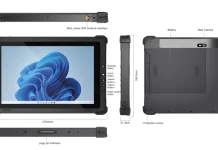Security surveillance management systems are an essential component of ensuring the safety and security of any organization. These systems not only help in monitoring and detecting any potential threats but also play a crucial role in preventing incidents before they escalate.
When it comes to choosing the right security surveillance management system, there are a few key factors that you need to consider. The first and foremost is the scalability of the system. It is important to invest in a system that can grow with your organization and accommodate additional cameras and components as needed.
Another important factor to consider is the reliability of the system. A reliable surveillance management system should be able to function properly at all times, without any glitches or downtime. This ensures that you have continuous monitoring and surveillance of your premises, even in adverse conditions.
Integration capabilities are also crucial when selecting a security surveillance management system. It is important that the system can seamlessly integrate with other security systems such as access control and alarms, to provide a comprehensive security solution.
When it comes to the features of a security surveillance management system, there are a few key components that are essential for effective surveillance. These include high-definition cameras with clear imaging capabilities, motion detection and analytics, remote access and monitoring, and storage options for recorded footage.
In addition to these key features, it is also important to consider the ease of use of the system. A user-friendly interface and intuitive controls can make a big difference in how efficiently the system is utilized by security personnel.
Training and support are also important aspects to consider when implementing a security surveillance management system. Proper training ensures that security personnel are equipped with the skills and knowledge to effectively use the system, while good support ensures that any technical issues are resolved in a timely manner.
In terms of implementation, it is important to have a thorough understanding of your organization’s security needs and objectives before selecting a security surveillance management system. Conducting a comprehensive security assessment can help identify vulnerabilities and determine the best course of action for implementing a surveillance system.
When it comes to managing a security surveillance system, there are a few key best practices to keep in mind. Regular system checks and maintenance are essential to ensure that the system is functioning optimally. It is also important to periodically review camera placements and coverage to ensure that all areas are adequately monitored.

Lastly, data security and compliance are paramount when it comes to managing a security surveillance system. It is important to implement strong security measures to protect the data collected by the system and ensure compliance with data protection regulations.
In conclusion, a well-managed security surveillance system is a critical component of any organization’s security infrastructure. By following the guidelines outlined in this complete guide to security surveillance management systems, you can enhance the safety and security of your organization and protect against potential threats.






















![InstaPro APK Download Latest Version 2023 [Anti Ban]](https://olo.my.id/wp-content/uploads/2023/10/instapro-100x70.jpg)
